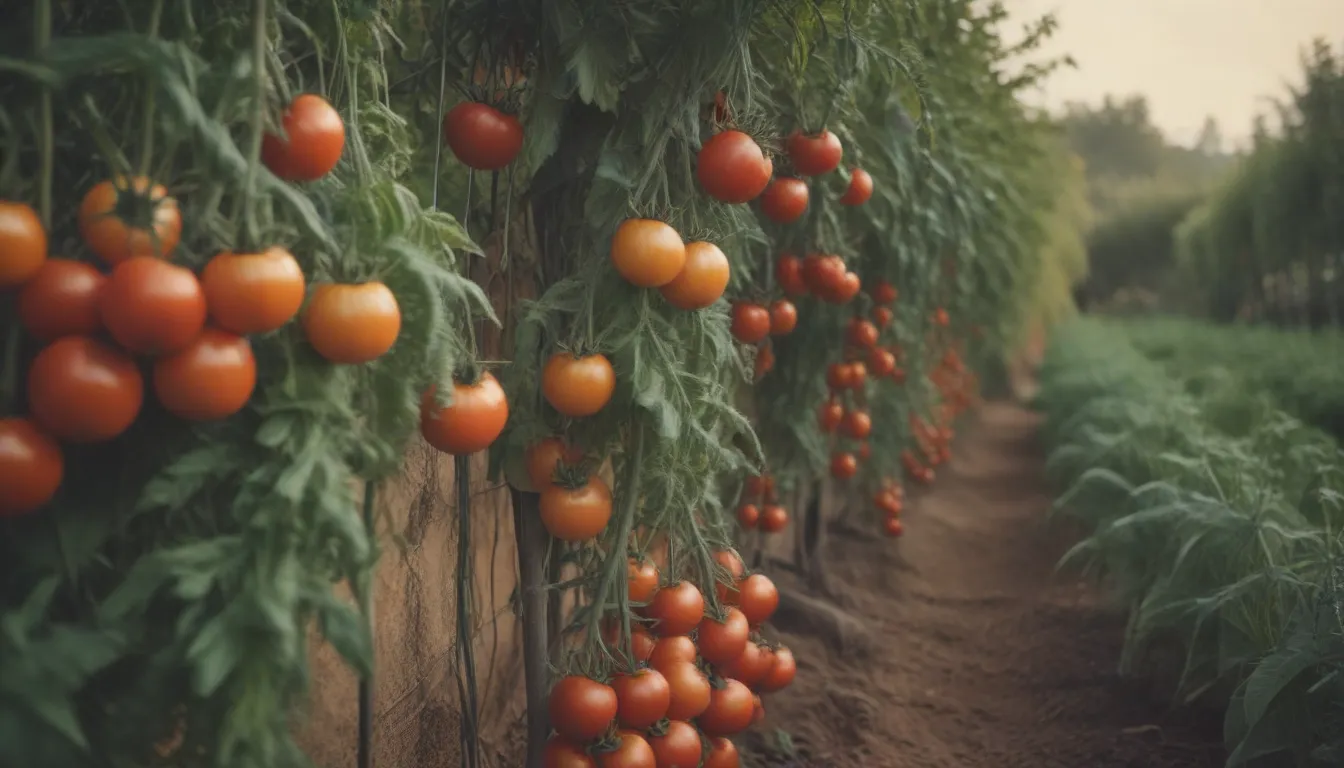The Importance of Properly Spacing Tomatoes in Your Garden

Are you getting ready to plant your tomatoes in the garden this season? Whether you are starting from seed or buying seedlings, one of the most crucial factors to consider for successful growing is plant spacing. Proper spacing ensures that your tomatoes have enough room to flourish and produce an abundant harvest.
As a general rule of thumb, it is recommended to allow 2 to 3 feet of space in all directions for each tomato plant. However, the exact spacing can vary depending on the type of tomato you are growing. Determinate tomatoes, which have a more compact growth habit, require less space compared to indeterminate tomatoes, which have a longer growing season.
Understanding Determinate vs. Indeterminate Tomatoes
Before you start planting your tomatoes, it is essential to determine whether you have determinate or indeterminate varieties. This information can usually be found on the seed package or plant label.
- Determinate Tomatoes: These tomatoes grow to a specific height, flower, set fruit, and ripen within a short timeframe. They can be planted as close as 18 to 24 inches apart in rows spaced 3 to 4 feet apart. Determinate tomatoes are often compact and do not require as much support or pruning.
- Indeterminate Tomatoes: On the other hand, indeterminate tomatoes have a long growing season that continues until the first fall frost. They require more generous spacing of at least 3 feet apart in rows spaced at least 4 feet apart. Indeterminate tomatoes should always be staked, trellised, or caged, and regular pruning is necessary to control their vigorous growth.
Spacing Tip: When in doubt, it is better to plant tomatoes further apart than too close together. Giving your plants extra space ensures optimal growth and prevents overcrowding.
The Importance of Proper Tomato Spacing
Maintaining adequate spacing between tomato plants is essential for several reasons:
- Preventing Disease Spread: Tomatoes are susceptible to various diseases, including fungal diseases like early blight and late blight, as well as viruses such as tomato mosaic virus. Proper spacing allows for good air circulation, reducing the risk of diseases spreading among plants.
- Facilitating Maintenance: Generous spacing between tomato plants makes it easier to access the plants for pruning, weeding, and harvesting without causing damage to neighboring plants.
Signs Your Tomatoes Are Spaced Too Close Together
If you notice the following signs in your tomato plants, it may indicate that you have not provided enough space for them to grow:
- Stunted growth
- Yellowing leaves
- Reduced fruit production
- Increased susceptibility to diseases
Additional Tips for Growing Tomatoes Successfully
In addition to proper spacing, here are some key tips to help you grow delicious tomatoes in your garden:
- The minimum spacing for determinate tomato varieties is 18 to 24 inches between plants and 3 feet between rows.
- In raised beds with limited space, consider planting determinate varieties that can be placed closer together.
- Avoid planting two tomato plants in close proximity as they will compete for space, nutrients, and water. Give each plant adequate room for optimal growth.
- When planting tomatoes, bury them deeply in the ground to encourage strong root development and stability.
For more information on growing tomatoes in home gardens, refer to resources like the University of Minnesota Extension and Penn State Extension guides on tomato cultivation.
By following these guidelines and paying attention to proper tomato spacing, you can set yourself up for a successful and rewarding tomato-growing season. Happy gardening!





